The Global Power of Protest
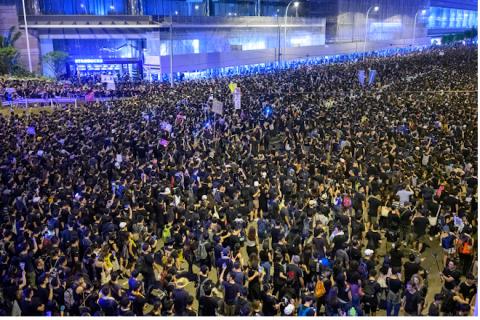
(Photo credit: Depositphotos.com)
Throughout human history, protest has always held a center-stage role, shaping the narrative with the timbre of collective voice and action. From the rugged cobblestone streets of colonial Boston to the sunbaked squares of Tahrir, the black soil of Selma to the neon-lit expanses of Hong Kong, the power of protest has reverberated through time and across continents, shifting paradigms and confronting the status quo. Yet, today, the sound of dissent rings with a peculiar tenor — a digitally-charged chord that resonates with global discontent over economic disparity and social injustice and is, as ever, an indomitable force illustrating a global connective thread shaped by shared grievances and hopes.
In its modern iteration, protest unfolds in a new kind of global mobilization, a phenomenon that is as diverse in form as it is unified in purpose. Its features are not homogenous, but its root in economic inequality and lack of basic necessities binds it together. It is no longer just about the immediate political milieu but about an interconnected landscape of structural fault lines.
Zachariah Mampilly, in his study of protests in Africa, underscores the transformative potential of such mobilizations. Drawing parallels, protests—irrespective of their geographical origin—can significantly alter policy frameworks and societal norms, and inspire other groups.
The Black Lives Matter movement, for example, which was initially sparked by the killing of Trayvon Martin in 2012, has grown into a global campaign against violence and systemic racism. In June 2020, thousands of people took to the streets of London to protest against racism and police brutality. The protests were inspired by the Black Lives Matter movement and the then recent murder of George Floyd at the hands of the police, but they were also fueled by a number of high-profile cases of police brutality in the UK, such as the death of Belly Mujinga, a Black woman who was spat on by a white man while working as a transport worker during the COVID-19 pandemic.
In France, demonstrators—also inspired by BLM—protested the death of Adama Traore, a Black man who died in police custody in 2016. In India, protests were fueled by a number of high-profile cases of police brutality against Dalits, a group of people who are considered to be "untouchable" in the Hindu caste system. The power of the BLM movement lies not only in its ability to bring issues of racial injustice to the forefront of societal discourse, but also its capacity to force policy discussions on police reform, racial equality, and social justice across the globe.
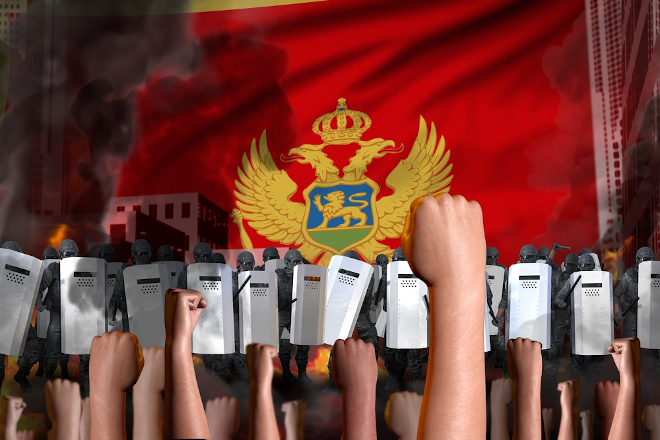
(Photo credit: Depositphotos.com)
At the heart of these global protests lies the question of why. Why do individuals, many of whom have never taken to the streets before, suddenly feel compelled to raise their voices, risking personal safety and sometimes even their lives? The reasons are manifold, and while each protest has its unique catalyst, there exists an intricate web of shared frustrations and aspirations that interlink them. Protests are rarely spontaneous bursts of anger, but rather the culmination of simmering discontent. They're the tangible manifestations of stories, individual and collective, that have long remained on the fringes. In societies that value the promise of capitalism, for instance, economic disparity remains a grievous wound that isn't necessarily about the wealth of nations but rather the distribution of that wealth, as seen with the Occupy Wall Street movement, where the rallying cry wasn’t just about economic injustice in isolation but how it intertwined with political systems, creating an oligarchy masked as a democracy. Similar sentiments, of course, are not isolated to Wall Street or the West. From the streets of Santiago, to the boulevards of Beirut, economic frustrations have intertwined with concerns about corruption, governance, and the very essence of democracy. When breadwinners struggle daily, when youth, despite higher education, find doors of opportunity firmly shut, the resulting disillusionment festers and eventually boils over.
These narratives, though specific in their origin, eventually but inevitably converge to fuel the largescale and multinational demonstrations that we see today, like the global climate protests led predominantly by youths. From Greta Thunberg's solitary strikes outside the Swedish Parliament to millions worldwide demanding climate action, we have witnessed a fervent call for preserving our planet's future, where the battleground isn't just economic disparity or overt political oppression: It's existential, pitting current complacencies against the looming specter of environmental collapse. But even so, within this vast mosaic of ecological and anti-wealth activism, the undertones of economic disparity and social justice remain discernible. After all, the most vulnerable to climate change's ravages are often the economically disadvantaged and marginalized communities. Hence, what starts as an environmental movement seamlessly integrates demands for economic justice and equity. This intersectionality is not an anomaly but rather a testament to the intricate interplay of global challenges we confront today.
Economic disparity, though, is but one piece of the puzzle. Across the globe, social injustices, deeply embedded in societal structures, persist. For many, especially marginalized communities, these injustices are not glitches but lived realities. The racial undercurrents of the Black Lives Matter movement, the fervent cries for women's rights in nations like Iran, or the plight of the Uyghurs in China—all provide glaring testimonies to social systems that often exclude, oppress, and dehumanize.
It's also worth noting now that modern protests are distinguished not just by their digital nature but also by the demographic that often leads them. Youths, historically seen as the torchbearers of change, have assumed a pivotal role in shaping these resistances. Be it in the U.S., Hong Kong, Iran, or elsewhere, young voices are at the forefront, challenging traditional hierarchies and envisioning a radically different future. Their audacity, informed by both their unique lived experiences and the digital universe they inhabit, challenges established norms, infusing fresh energy into the global discourse on rights and reforms.
Yet, this youthful zeal also finds itself at the crossroads of hope and despair. In many parts of the world, these very voices of change face daunting pushbacks. The machinery of state repression, emboldened by technological advancements, can be overwhelming. Surveillance, digital censorship, and outright violence are often the tools of choice for regimes intent on curbing dissent. The scenes from Myanmar, where peaceful demonstrators faced brutal military crackdowns, serve as a somber reminder of the high stakes many protesters confront. But amidst this adversity, transnational alliances are still formed—often through the digital bridges of our interconnected world—and amplify localized struggles, bringing them to global limelight. The Palestinian cause, for instance, has resonated globally, with people from various backgrounds expressing solidarity and urging an end to the Israeli occupation and violence. This interrelation provides an ability to relate and respond to distant struggles, and it redefines the very essence of modern activism. And herein lies an intriguing paradox: in an age often criticized for dwindling attention spans and digital distractions, the world is witnessing mass mobilizations of unprecedented scale and persistence. And the cause, perhaps, can be traced to the digital realm itself.

(Photo credit: Depositphotos.com)
Social media, with all its flaws, has democratized information. Narratives that were once sidelined or suppressed now find their voice. A video showcasing police brutality, an account detailing state oppression, or even a simple image capturing the raw emotion of protesters—these digital fragments coalesce, igniting collective outrage and empathy. Cast against the backdrop of a 21st-century world, one sculpted by digital revolutions, these demonstrations hold a mirror to the role of the internet as both a catalyzing and sustaining factor. The collective impulse that has sparked these movements thrives in a shared digital space, feeding off the profound power of social platforms to mobilize, unify, and amplify voices of dissent.
Zeynep Tufekci has highlighted the revolutionary impact of platforms like Twitter and Facebook in shaping modern protests. Movements, which traditionally took years to build momentum, can now catalyze in a matter of days. Social media, in her view, is not just a medium of communication; it's a lifeline of modern resistance, enabling rapid organization and the dissemination of on-ground realities, often bypassing traditional gatekeepers of information.
For example, the 2019 Iran protests were sparked by a surge in fuel prices, but they encompassed a much broader canvas of economic discontent and a cry against perceived corruption. Iranians, especially the youth, grappled with a stagnating economy, dwindling job opportunities, and a sense of disenfranchisement, a scenario not entirely alien to the struggles of many around the globe. In a series of protests that would come to be known as Bloody November, people swarmed the streets of Tehran and other major cities, their dissent seeping into the urban arteries of the nation. But this physical manifestation of resistance was only one layer of the movement. Parallel to it, in the virtual corridors of social media, a mirrored struggle was taking shape.
Through platforms like Twitter and Telegram, images and messages of defiance from Iran's street protests began to circulate at an astonishing speed. The world witnessed firsthand the tear gas-laden air of Tehran and the unyielding throngs in Mashhad and Shiraz. In the sheer vastness of the digital sphere, a localized protest morphed into a global cause. Social media provided the Iranian people a platform to articulate their grievances and gave them a megaphone to amplify their cry for justice, projecting it far beyond their national boundaries.
But like all tools of power, social media comes with its set of challenges. Tufekci herself warns that rapid mobilizations through social media systems might not allow for the organic development of leadership structures or clear agendas, potentially leading to fragmented movements that burn bright but short. And while social media offers an empowering space for dissent and organization, it can also be a double-edged sword. The echo chambers it often inadvertently creates can polarize societies further, allowing misinformation to spread and potentially exacerbating divisions. And state actors and counter-protest movements can harness the same platforms to surveil, intimidate, or propagate their counter-narratives.
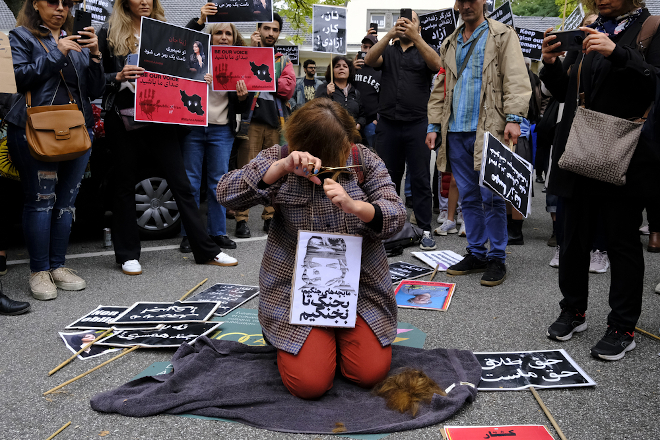
(Photo credit: Depositphotos.com)
In response to the 2019 protests, for instance, Iranian authorities implemented one of the most extensive internet shutdowns ever recorded, effectively plunging the nation into digital darkness and isolating it completely. This approach, disconcertingly, isn't an isolated incident. From India's repeated internet blackouts in Kashmir to Belarus's digital crackdown during its post-election protests, this strategy of silencing online dissent is finding common place in the playbooks of autocratic regimes.
It's not unexpected that the journey towards change isn't devoid of obstacles, of course. As it is, by their very nature, protests can, and often do, turn violent. The interplay between peaceful protesters, aggressive counter-protesters, and law enforcement agencies can sometimes culminate in chaos. During the Arab Spring, peaceful protests morphed into violent confrontations, leading to a tragic cycle of chaos and instability. In Hong Kong, citizens resisted an extradition bill that they believed would erode their freedoms, reflecting deeper anxieties about Beijing's increasing influence in their ostensibly autonomous region. What started as peaceful pro-democracy protests spiraled into violent clashes with the police, a situation that raised questions about the line between civil disobedience and anarchy.
But dismissing protests based solely on instances of violence can be a narrow and reductionist approach to understanding complex sociopolitical movements. At the heart of every protest lies a multitude of voices, grievances, and aspirations, often stemming from deep-seated systemic issues or years of accumulated discontent. When the broader narrative is overshadowed by selective violent events, the essence of the movement is often lost, leading to a skewed representation of the protesters' genuine demands and concerns. Such an approach not only misrepresents the protesters but also dismisses their legitimate grievances, further entrenching the very issues they seek to address. This is especially true when it is a form violence itself that people protest against, such as the 2020 women-led protests in Iran.
Iran has a complex history when it comes to women's rights. After the 1979 Islamic Revolution, there was a substantial rollback of women's rights, with women being legally required to wear the hijab and facing significant restrictions in terms of their personal and professional lives. Women in Iran, certainly, have always been at the forefront of political protests, advocating for broader societal and political change. In many cases, these protests are not just about women's rights, but are tied to larger issues of political freedom, economic justice, and human rights.
In 2017, Iranian women led the "White Wednesdays" campaign, where women protested the mandatory hijab law by removing their headscarves in public and wearing white on Wednesdays. These acts of defiance were shared on social media, and the movement received widespread international attention. Many women were arrested for their participation, but this did not deter the movement, highlighting the courage and resilience of these women in their fight for their freedoms.
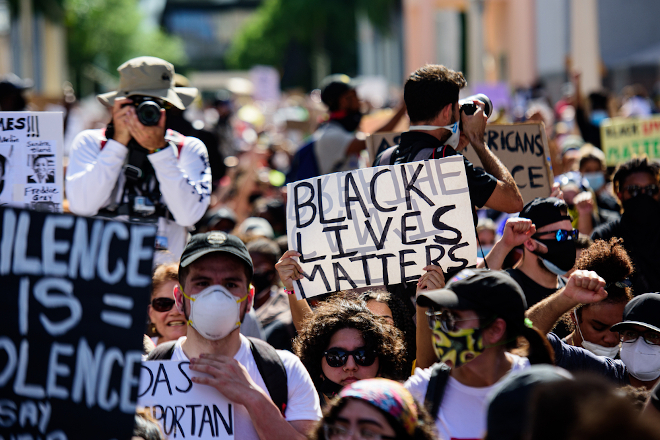
(Photo credit: Depositphotos.com)
Then, the death of Mahsa Amini in police custody in September 2022 sparked a massive wave of protests across Iran. Amini, a 22-year-old Kurdish woman, was arrested for allegedly violating the country's strict dress code. She died in custody a few days later under mysterious circumstances. The protests began in Amini's hometown of Sanandaj, in Iran's Kurdish region. They quickly spread to other cities across the country, including Tehran, Mashhad, and Shiraz. The protesters were demanding justice for Amini's death and an end to the government's repression of women.
The protests were met with a brutal crackdown by the Iranian government. Security forces opened fire on the protesters, killing and wounding hundreds. Thousands of people were arrested, and many of them were tortured. Despite the crackdown, the protests continued for weeks. And while they eventually died down, the protests had a significant impact on Iran. They showed that the Iranian people are no longer willing to accept the government's repressive policies. They also inspired a new generation of activists to fight for women's rights and democracy. Though sparked by tragedy and violence against women, the movement will have a lasting impact on Iran. The very act of these protests, even at their most chaotic, were a profound expression of a society's pulse. Even when they turn violent, protests remain an essential symptom of deeper societal ailments that require addressal. Dismissing them based on instances of violence is akin to ignoring a persistent fever because of the discomfort it brings.
Besides, focusing solely on violent episodes without considering the wider context can inadvertently provide authoritarian regimes with ammunition to delegitimize and suppress these movements. By painting an entire protest movement as violent or chaotic based on isolated incidents, state apparatuses or opposing factions can employ a mix of legal, propaganda, and coercive tactics to crack down on these movements, often with public support. This can lead to a spiral of further violence, as suppressed voices grow more desperate, and genuine dialogues or avenues for resolution are stifled.
The 1989 Tiananmen Square protests in China, for example, were widely reported as being violent, with protesters clashing with security forces and tanks. However, there is evidence to suggest that the violence was largely initiated by the government, with security forces opening fire on unarmed protesters.
The farmers' protests in India in 2020-2021 were also met with a heavy-handed response from the government, with security forces using tear gas and batons to disperse protesters, even though the protests were largely peaceful. And of course, the Black Lives Matter protests in the United States were often portrayed as being violent, with some protesters engaging in looting and vandalism; even though the vast majority of protests are peaceful, and the violence that does occur is often initiated by police or counter-protesters.
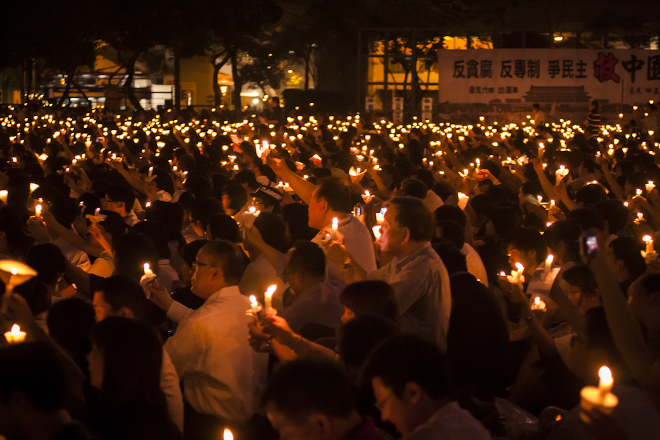
(Photo credit: Depositphotos.com)
Yet, despite these challenges, the undeniable fact remains: Protests work. Not always in the immediate, tangible sense of policy revisions or regime changes, but in the more subtle, profound realm of societal consciousness. As Mampilly posits, even in their most chaotic manifestations, protests are less about the present and more about the future they seek to shape. Protests disrupt the norm, they force conversations, challenge complacencies, and eventually mold societal ethos. Hong Kong's government, in response to the months’-long protests, withdrew the controversial extradition bill. Indian farmers ended their yearlong protests after the government accepted their demands. A wave of student-protests against Chile’s inequality led to a rewriting of the country’s dictator-era Constitution. In the U.S., the resounding calls for justice have prompted serious discussions on police reform, with tangible policy changes in some cities and states. And though the Iranian government has not yet made any fundamental changes to its policies, the women’s protests forced it to make some concessions, such as relaxing the dress code for women in some public places.
But the road to that future is treacherous. State apparatuses, especially in autocratic regimes, have evolved, leveraging technology to surveil, censor, and repress. The very tools that empower protesters—social media platforms, encrypted messaging services, digital forums—are also potential vulnerabilities. State-sponsored cyberattacks, digital surveillance, and misinformation campaigns are now part and parcel of the modern protest landscape. And sure, global solidarity is a powerful force, but it's also essential to recognize the West's occasional myopic view of protests, especially in non-Western countries.
The lens through which global media, especially Western outlets, often view these protests can sometimes be tinted with biases or oversimplifications. Every movement, every cry for change, is rooted in a complex tapestry of history, culture, and socio-political dynamics. Reducing them to binary narratives does a disservice to the protesters and their cause. There is also the challenge in ensuring that the essence of localized struggles isn't diluted. The nuances, the cultural contexts, the unique histories, all demand careful attention. An oversimplification or a generic, one-size-fits-all approach risks robbing these movements of their rich tapestry of experiences and aspirations.
Still, as we stand at the precipice of a rapidly changing world order, the universality of the human spirit shines through. The power of protest, rooted in our innate desire for dignity, justice, and a better world, transcends geographical, cultural, and socioeconomic barriers. Every placard raised in Caracas resonates in the heart of an activist in the U.S. Every chant in Minsk finds an echo in the streets of Ecuador.
The world today, fragmented as it may seem, is bound by these shared aspirations. The challenges are monumental, the path fraught with uncertainties, but the collective will of humanity, time and again, has showcased its capacity for change. Protests, in their essence, are not just about dissent: they're about hope and a vision of a world not just of equal opportunities but where voices, no matter how marginalized, are heard, acknowledged, and celebrated. What fuels these global demonstrations is never mere dissatisfaction, but a deeper narrative at play. For many, these protests represent not just a moment of defiance but a protracted struggle against structures that perpetuate inequality.
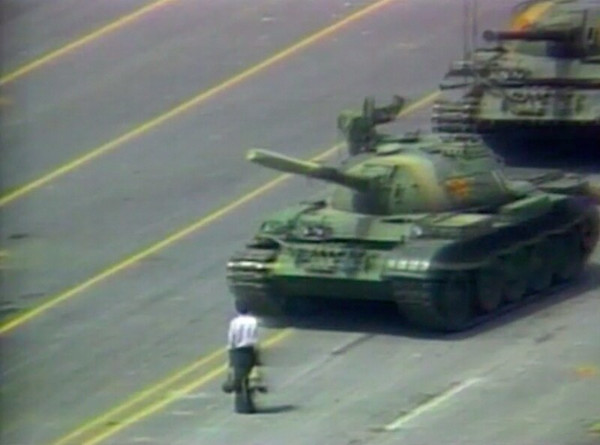
(Photo credit: Brandon Carson, Flickr, Creative Commons)
In the final reckoning, try as we might to decode the power of protest, a few truths emerge. Protests, in all their chaotic, pulsating, and tumultuous nature, are the lifeblood of vibrant democracies and a thorn in the side of autocracies. They challenge, disrupt, and eventually shape the narrative, steering societies towards introspection and, ideally, reformation. Their power isn't just in their immediate demands but in the broader dialogues they instigate, in the global consciousness they stir, and in the future they envision.
In the age of information, amidst the cacophony of digital discourses, the power of protest stands undiminished, a testament to our shared human spirit and its unwavering dream of a better tomorrow. From every clenched fist raised in defiance, to every slogan that pierces the air, to every silent vigil that mourns lost freedoms, there lies a promise of resilience, of hope, and of an unyielding quest for a world that is just, inclusive, and empathetic.
Author Bio:
Angelo Franco is Highbrow Magazine’s chief features writer.
For Highbrow Magazine
Image Sources:
--Brandon Carson (Flickr, Creative Commons)































































































































































































































































































































